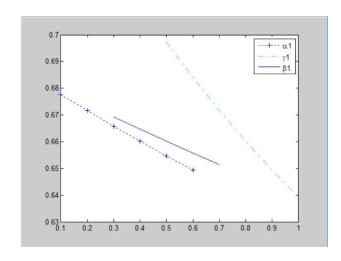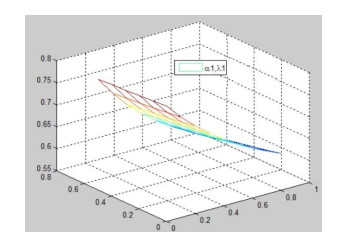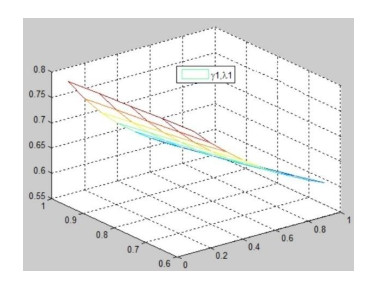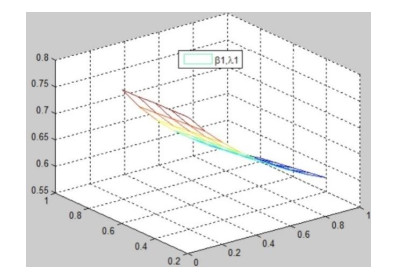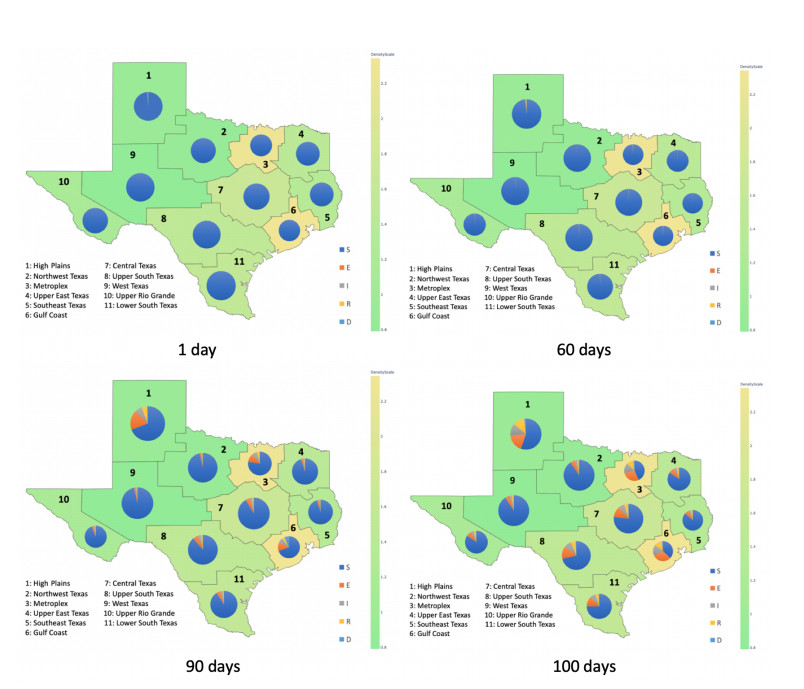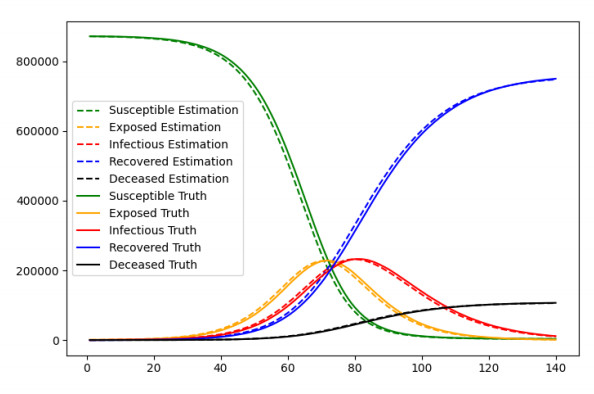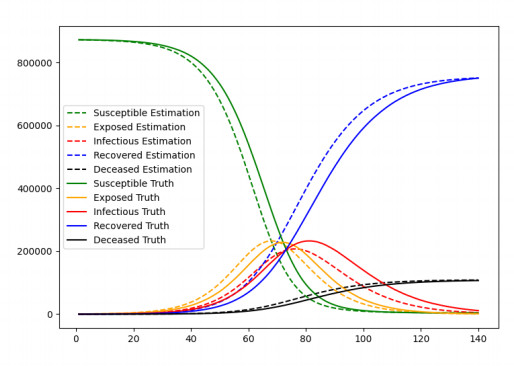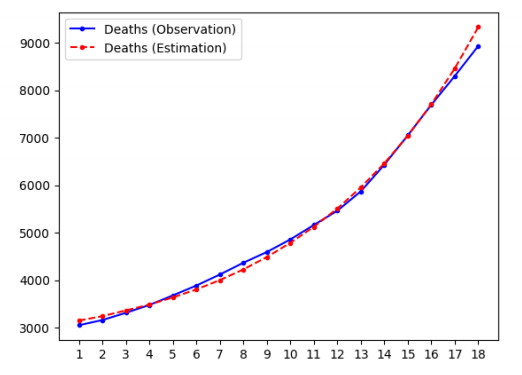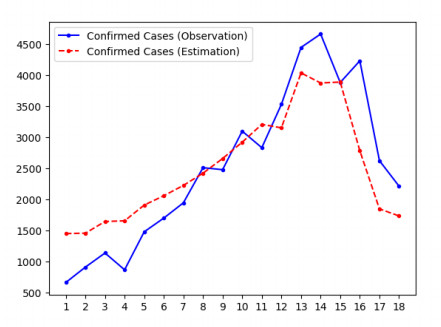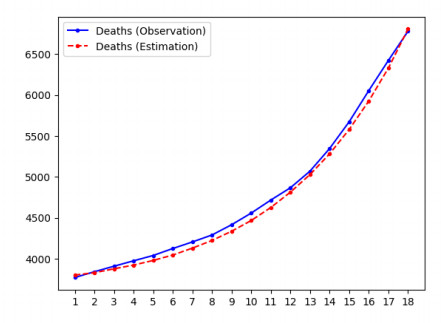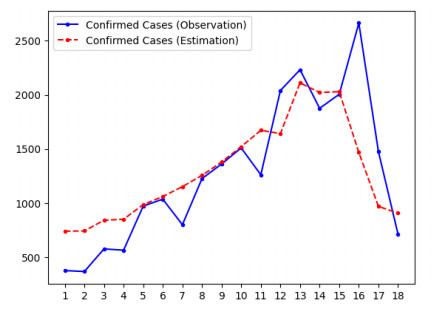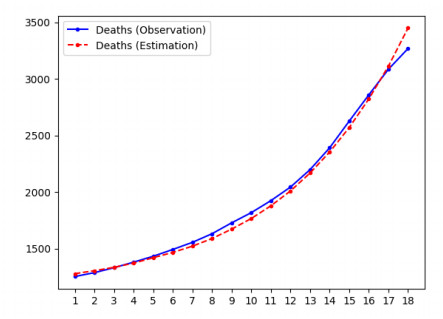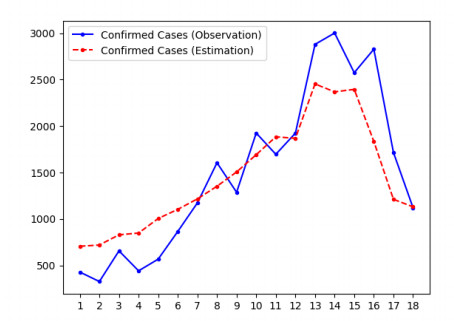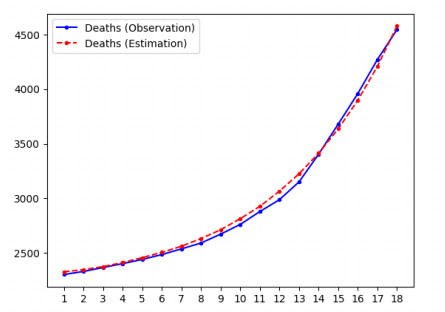1.
Introduction
Nowadays, most colleges and universities aim to be world-class by practicing first-class discipline. The current scientific and technological development prominently features highly comprehensive and integrated disciplines on the basis of considerable subject differentiation [1]. The interdisciplinary intersections, infiltrations and exchanges have been critical to discipline construction and breakthroughs. The scientists and researchers in academia are proficient in knowledge structure, cognitive mode and innovative thinking by working in teams (both in long-run and short-run) on the basis of knowledge sharing, which helps to bring rapid innovation and solving complex and comprehensive problems.
These institutions have been the incubators for scientific research and innovation on account of abundant subject knowledge, human, financial and material resources. The interdisciplinary scientific research cooperation and teamwork comprehensively promote the unexpected inspiration and innovative ideas of the individuals, different groups and the team. The essence lies in knowledgeable and technical communication between the individuals by facilitating the research capability of the entire team. To integrate the relevant research contents of each discipline, it is necessary to break the barriers therein and work together to achieve the common goal and reap the benefits of a wide range of available resources.
1.1. Knowledge sharing ability among team members
Relevant talents of various disciplines and departments, both inside and outside the universities and colleges, are included in the interdisciplinary research teams to broaden their academic vision. The knowledge sharing ability can be enhanced by taking inventory of the individual academicians and their team knowledge, screening, analyzing and exchanging the information to devise more effective scientific methods.
Significant progress is made in the interdisciplinary knowledge cooperation and sharing among the scientific research teams. The "Double First-Class" initiative of the Chinese government was the hot spot in seeking discipline by removing interdisciplinary and administrative barriers. Lee showed that the knowledge integration is conducive to guarantee the positive impact on the organizational innovative performance [2]. Borgman observed that 53% of researchers are willing to share their data, but the rest are unwilling, in the fear of wasting their valuable time [3]. Kerry studied the attitudes of researchers toward sharing scientific data and proved that researchers refuse to share data mainly because they are worried about the malicious use of their data and intellectual property issues [4]. Enke investigated the attitudes of researchers towards sharing research data and showed that they are willing to share the data but are concerned about data confidentiality problems [5]. In recent years, the domestic research on knowledge sharing has attracted the attention of many scholars. Zhu concluded that self-value perception, mutual benefit expectations, interpersonal trust and status are the main Knowledge Sharing Impact Factors [6]. The work of Zhang holds that there are direct and indirect factors affecting knowledge sharing, and these factors are interconvertible [7]. Rong reduced the differences in the members' knowledge through knowledge interaction by creating new knowledge [8]. Peltokorpi et al. observed that knowledge creation is the result of both formal and informal cooperation mechanisms [9].
1.2. Information complementarity between the team members
The complementarities of the interdisciplinary academic research teams mainly involve knowledge sharing and common learning and serve as an important and effective control mechanism for members' benefits. The exchange and application of knowledge effectively strengthen the resilience among the team members in the learning process and enable learners to get relevant knowledge benefits. This form allows the researchers to subdivide the process of learning and communication between the members in acquiring the desired knowledge.
Currently, interdisciplinary research has presented a new model in solving complex problems. Knoben believed that the current interdisciplinary integration and cooperation between teams is the main trend observed in scientific research cooperation in colleges and universities. Interdisciplinary research finds an equilibrium point between disciplines based on their differences and diversities [10]. The correlation, reuse and innovation of multidisciplinary knowledge play pivotal roles in the evolution of the subjects. Jianzhong Xu systematically analyzed and summarized the interdisciplinary mode in theory, modeling and framing [11]. According to Liu Qingsheng interdisciplinary research is divided into three types, from primary to the advanced stage, viz., Binding Interdisciplinary Research, Infiltrative Interdisciplinary Research and Chelating Interdisciplinary Research [12]. Liu expanded, integrated and applied the indexes of interdisciplinary influencing factors to measure the characteristics of various fields [13]. Yang concluded that the level of differentiation between various disciplines weakens and makes, a visual analysis of Interdisciplinary Information Science in the form of a science superposed graph [14]. Wang studied the knowledge sharing, co-construction and collaborative creation among team members [15], while Volkova has shown that the multi-Agent system assisted the team in decision-making modeling under uncertainty [16].
1.3. Factors influencing knowledge sharing among the team members
Knowledge is one of the seven factors of production for enterprise development and a decisive factor for sustainable competitive advantage. The intra-organizational knowledge sharing is an important process to enhance the core competitiveness either at the individual employee level or at the inter-organizational level, and it is conducive to the development, creation and improvement of the enterprise products or services, thereby further enhancing the organizational innovation capabilities and innovation performance [17]. Various studies on the inter-subjective knowledge sharing strategies influencing factors focus at the intra-organizational and inter-organizational level. The intra-organizational level analyzes sharing among the employees, between the employees and the firms and knowledge tacitness from knowledge characteristics perspective [18], willingness to share, trust, and rewards on individual perspective [19]. Research on knowledge sharing at the inter-organizational level focuses on innovative industry clusters [20] and cross-organizational project collaboration. It is observed that the factors affecting inter-organizational knowledge sharing include subject factors such as willingness to share, organizational trust, absorptive capacity, risk factor, allocation ratio, cost coefficient, etc.; and the object factors such as knowledge stock, knowledge complementarities, knowledge distance, etc. Existing studies have proved the importance of cross-organizational knowledge sharing on the enterprise performance, and they also clarified the role of factors such as absorptive capacity and knowledge resource endowment on the efficiency of inter-organizational knowledge sharing.
Rational people show less willingness to cooperate and depend on others. If every researcher looks at the problem from a self-interest perspective, it leads to Prisoner's Dilemma and eventually results in delay and even failure in scientific research. Therefore, it is necessary to explore in depth and explain with clarity two major issues: 1) how the level of knowledge sharing and the heterogeneity of knowledge structure among the researchers play an important role in the team composition and future scientific research and 2) what influences the innovative and knowledge transformation abilities of scientific researchers on team development.
"Interdisciplinary" is one of the most important characteristics of any scientific research team and is applicable not only to natural sciences but social sciences as well. The interdisciplinary cooperation and different research backgrounds help to integrate disciplines, improve efficiency and accelerate innovation process. Irrespective of the forms, the essence of them being together from different academic backgrounds substantiates the scientific research in the colleges and universities [21]. This paper discusses the characteristic factors of knowledge cooperation in interdisciplinary scientific research teams and calculates the level of cooperation between various scientific researchers by using evolutionary game theory. Further, a detailed illustration of the dynamic change in knowledge cooperation of the associated behavior of individuals in a scientific research team and the application of knowledge cooperation into the theoretical framework of evolutionary game are analyzed. Based on the analysis, this paper establishes the evolutionary game model of knowledge cooperation in interdisciplinary scientific research teams in colleges and universities, and it offers suggestions to solve the existing problems in the formation and development of scientific research teams in the first-class disciplines.
2.
Theoretical framework and model construction
2.1. Theoretical basis of evolutionary game model
An attempt is made in this paper to establish an evolutionary game model aiming at the long-term data sharing behavior of the interdisciplinary researcher's team system in academia. Evolutionary game theory, with a focus on rational people, combines game theory and dynamic theory on the basis of Bounded Rationality following the system theory approach [22]. In traditional game theory, it is often assumed that the participants are calm and rational. Only under the condition of complete information, game theory can be applied, but in real life, there is no such perfect platform for participants to provide such an environment. Therefore, through evolutionary game theory, all kinds of factors can be integrated into the game model to find a long-term strategy.
It is assumed that each member of the interdisciplinary research team of colleges and universities is a bounded rational individual. They have various uncertain answers in knowledge cooperation. Therefore, each member of the team has two choices, namely, sharing or not sharing, and their choice is based on their level of information acquisition and expectation of the results.
2.2. The basic hypothesis of evolutionary game model
The knowledge cooperation of a scientific research team is affected by different interest demands of the team members. The effect of knowledge cooperation is obviously different among the participants. At the same time, the game relation between the subject and the team is rather complex. For each individual team member, knowledge cooperation can be represented as the satisfaction in the scientific research cooperation as a result of additional knowledge acquisition. Similarly, for the entire team, the measure indicators can be divided into the level of satisfaction and the scientific research outcome of the team as shown in Table 1. The terms used in the game model are explained below.
1) Players: The current interdisciplinary scientific research team of colleges and universities requires both the permission of the university and college administration and active cooperation between the teachers from various disciplines to share information to optimize the team performance. Theoretically, we assumed that the team consists of two members, and the team benefit function is determined by the degree of cooperation, the level of resource input, the degree of knowledge sharing and learning and the benefit distribution system, with both members playing different roles at different stages in team building process. Scientific research team cooperation mainly refers to general knowledge sharing and result sharing among members on equal footing.
2) Subject strategy: Each member in the team has two options, to cooperate or not to cooperate, and has to adjust his strategy in the process of the evolutionary game to maximize the benefit.
3) Hypothesis of Bounded Rationality: The limited cognitive ability of the decision-maker determines that he cannot make decisions with complete rationality with incomplete information.
4) Cooperative behavior: Every participant is responsible for different parts of the corresponding tasks and contributes his stake in the value addition process.
5) Interdisciplinary: This refers to comprehensive scientific research activities or behaviors covering two or more disciplines; however, the present model considers only two disciplines.
6) Payoff matrix: The game theory dynamic evolution process and ecological theory research consider a rational person, and the system theory is used to predict the group behavior trend through dynamic analysis and calculation of various influencing factors [23]. For example, the participants in the game are any two "economists" in the scientific research team, which are denoted as Researchers 1 and 2.
The hypotheses of the evolution model of interdisciplinary knowledge sharing constructed in this paper are as follows:
(1) π1 and π2 are the normal benefits obtained by Researchers 1 and 2 when they choose not to share their knowledge.
(2) a1 and a2 are the knowledge levels of Researchers 1 and 2; according to the principle of bounded rationality, Researchers 1 and 2 share their knowledge per specific situation. Let the levels of their own practical knowledge sharing be α1 and α2. Let β1 and β2 be the abilities of Researchers 1 and 2 to digest and absorb the knowledge in the process. Then the direct benefits obtained by Researchers 1 and 2 through knowledge sharing are given as a2α2β1 and a1α1β2.
(3) In the interdisciplinary knowledge research sharing team, only heterogeneous and valuable knowledge is meaningful, especially in variegated knowledge structures. Let the heterogeneity of the shared knowledge of Researchers 1 and 2 be λ1 and λ2. Researchers use their partner's and own knowledge in the process with innovation coefficients γ1 and γ2.
(4) Researchers inevitably expect costs while sharing knowledge, such as risk cost, opportunity cost and transfer cost. When c1 and c2 are the cost coefficients of knowledge sharing, then the knowledge costs of Researchers 1 and 2 are given by a1c1 and a2c2 respectively.
(5) During the interdisciplinary research team's knowledge sharing, the conversion benefit coefficient is affected not only by the level of individual researcher knowledge but also by the heterogeneity and innovative knowledge shared by them. Let ν1 and ν2 represent the conversion benefit coefficients of Researchers 1 and 2, when both choose knowledge sharing strategy. Then the conversion benefits obtained by Researchers 1 and 2 are given as ν1(γ1λ2β1a2α2 + a1) and ν2(γ2λ1β2a1α1 + a2). The most complex case arises when two sides in knowledge cooperation have different choices. For example, one chooses knowledge sharing while the other does not. In this case, the researcher who shares knowledge does not get new information from another party. Let t1 be the conversion benefit coefficient under the condition when Researcher 1 chooses knowledge sharing strategy while Researcher 2 does not; t2 indicates the conversion benefit coefficient when Researcher 2 chooses knowledge sharing strategy and while Researcher 1 does not. This is illustrated in Table 2.
2.3. Solution of evolutionary stable strategy
If n and m are the probabilities of Researchers 1 and 2 opting for knowledge cooperation strategy, then (1-n) and (1-m) are the probabilities of non-cooperation by Researchers 1 and 2 respectively. Participants in the game can learn the required knowledge of other subject(s) or may even fail to get if they individually spend much more time and energy on it. Hence, both sides benefit in the game by choosing the condition of knowledge sharing. Here, the benefit obtained by Researcher 1 is denoted as Q11 and expressed as
The benefit Q12 when Researcher 1 does not cooperate is represented by
while the average benefit of Researcher 1, ˉQ1, is given as
Therefore, the replicated dynamic equation for Researcher 1, f1(n), is
and the replicated dynamic equation for Researcher 2, f2(m), is
and the replicated dynamic equations are
From the above constructed evolutionary model, it can be seen that the balance point of the model depends on the degree of knowledge sharing, and there are two possibilities, that both cooperate wholeheartedly or do not cooperate in the model, and the results are presented below.
3.
Analysis of evolutionary game model result
3.1. Finding the equilibrium point of evolutionary game model
The replicated dynamic equations depict the group dynamics of the evolutionary game system of interdisciplinary research teams in colleges and universities, and at equilibrium dn/dndtdt=0 and dm/dmdtdt=0. Five equilibrium points are obtained by solving Eq (7). The equilibrium point E1(n=0,m=0) represents that the participants have not carried out knowledge cooperation strategy, The equilibrium point E2(n=1,m=0) represents that Researcher 1 has shared knowledge, but Researcher 2 has not but acquired the knowledge from Researcher 1. The equilibrium point E3(n=0,m=1) indicates that Researcher 2 has shared his/her knowledge with Researcher 1 but has not benefited from sharing. The equilibrium point E4(n=1,m=1) reflects that researchers from different subjects in the team are willing to share their knowledge and create an atmosphere of mutual trust. The last equilibrium point is E5(n∗,m∗), E5(n=a2c2(ν2−t2)(λ1γ2a1 + λ1β2a1α1 + a2),m=a1c1(ν1−t1)(γ1λ2a2 + λ2β1a2α2 + a1)), in which the probability of Researcher 1 in the team sharing knowledge is a2c2(ν2−t2)(λ1γ2a1 + λ1β2a1α1 + a2), and Researcher 2 is a1c1(ν1−t1)(γ1λ2a2 + λ2β1a2α2 + a1).
The stability of equilibrium point can be analyzed by calculating the evolutionary stable strategy (ESS) by Friedman method [24] through the Jacobi matrix's local stability of the dynamic system. The Jacobi matrix is composed of Eqs (4) and (5) as follows:
According to detJ=∂f1(n)∂n∂f2(m)∂m−∂f1(n)∂m∂f2(m)∂n and trJ=∂f1(n)∂n+∂f2(m)∂m, the determinant and the trace of each point are calculated and depicted in Table 3.
3.2. The model analysis
Figure 1 describes the dynamic evolution of interdisciplinary researchers in the process of knowledge sharing in college and university teachers' teams. It is noticed that the dynamic evolutionary game system has two stable equilibrium points E1(0,0), E4(1,1) and a saddle point E5(n∗,m∗). The polygonal line formed by these three points is the main body of two kinds of games, with the boundary across where the scientific interdisciplinary researchers teams of colleges and universities opt to share knowledge or not. If the initial state of the game is in the quadrilateral E1E2E5E3, the result of the game is not to share knowledge after a large number of games. Here, note the area of quadrilateral E1E2E5E3 as S:
On the contrary, if the initial state of the game is in the quadrilateral E2E5E3E4, the result tends to choosing to share knowledge after countless games. Since the initial state and system parameters exert a significant influence on the final equilibrium, it is necessary to analyze the influence of knowledge heterogeneity on other key parameters in the process of interdisciplinary knowledge sharing.
1) Let α1 and α2 be the level of knowledge sharing of Researchers 1 and 2 and λ1, λ2 be the heterogeneity of shared knowledge of Researchers 1 and 2.
According to the formula n∗=a2c2(ν2−t2)(λ1γ2a1 + λ1β2a1α1 + a2), the equation λ1α1 = n″ can be derived, and the result is represented as ∂n∗∂n″=−c2a2a1β2(ν2−t2)(λ1γ2a1 + a2+a1n″β2)2<0. Thus, the probability of Researcher 1 sharing knowledge decreases when λ1α1 = n″. Similarly, when ∂m∗∂m″=−c1a1β1a2(ν1−t1)(γ1λ2a2 + a1+m″a2β1)2 <0, it indicates that the probability of Researcher 2 sharing knowledge decreases when λ2α2 = m″. Also, the calculation of Eq (8) implies that the area SE1E2E5E3 decreases with increase in knowledge sharing level and the heterogeneity of shared knowledge and when SE2E5E3E4 = 1, SE1E2E5E3 increases with the decrease in level of knowledge sharing and the heterogeneity of shared knowledge, we conclude that the area SE2E5E3E4 increases with the increase in the level of knowledge sharing and the proportion of heterogeneity of shared knowledge, which indicates that the willingness of scientific researchers to share knowledge is positively correlated with the level of knowledge sharing and the proportion of heterogeneity of shared knowledge. Meanwhile, the formula n∗=a2c2(ν2−t2)(λ1γ2a1 + λ1β2a1α1 + a2) is used to get the derivative of α1, and the result is ∂n∗∂α1=−a2c2λ1a1β2(ν2−t2)(λ1γ2a1 + λ1β2a1α1 + a2)2, which is further used to get the differentiation of λ1 ∂n∗∂α1∂λ1=a2c2a1β2(λ1γ2a1 + λ1β2a1α1 - a2)(ν2−t2)(λ1γ2a1 + λ1β2a1α1 + a2)3. Here, it is noticed that if the knowledge level of Researcher 2 after sharing heterogeneous knowledge from Researcher 1 and conducting innovation is less than his/her original knowledge level λ1γ2a1 + λ1β2a1α1, then ∂n∗∂α1∂λ1 < 0, demonstrating that α1 level of knowledge sharing of Researcher 1 decreases with increase in the heterogeneity of shared knowledge; when ∂n∗∂α1∂λ1 > 0, it means that the level of knowledge sharing of Researcher 1 increases with increase in heterogeneity of shared knowledge. This requires a virtuous cycle among the researchers team, which helps to exchange knowledge from different disciplines.
2) Let the innovative coefficients of Researchers 1 and 2 when they choose knowledge sharing be γ1 and γ2 respectively.
According to formula n∗=a2c2(ν2−t2)(λ1γ2a1 + λ1β2a1α1 + a2), the innovative coefficient γ2 can be derived as ∂n∗∂γ2=−a2c2λ1a1(ν2−t2)(λ1γ2a1 + λ1β2a1α1 + a2)2<0, which reveals that the probability of Researcher 1 to share his/her knowledge decreases with the increase in innovative coefficient of Researcher 2. Using the same procedure, ∂m∗∂γ1=−a1c1λ2a2(ν1−t1)(γ1λ2a2 + λ2β1a2α2 + a1)2 can be obtained, showing that the probability of Researcher 2 to share his/her knowledge decreases with the increase in innovative coefficient of Researcher 2. This is commonly seen in real situations. For rational researchers, their willingness in cooperation, confidence and status will be undermined if their partners in the team have strong capability to innovate, which will diminish the probability of knowledge sharing and engender little trust between the participants. Betrayal and convenience-seeking behavior can commonly be seen but without punishment for lack of a complete mechanism. Consequently, one who does not share his/her knowledge assumes little or no responsibility, while one who shares his knowledge does not receive the due credit. In this situation, one who chooses not to share benefits. The correlation between the heterogeneity and innovation of the shared knowledge of Researcher 1 can be computed in the same way. The result is ∂n∗∂γ2∂λ1=a2c2a1(λ1γ2a1 + λ1β2a1α1 - a2)(ν2−t2)(λ1γ2a1 + λ1β2a1α1 + a2)3. If λ1γ2a1 + λ1β2a1α1 (knowledge level of Researcher 1 after obtaining shared knowledge and innovation) < a2 (original knowledge level of Researcher 1), the probability of Researcher 1 to share knowledge decreases with increase in λ1γ2, and that of Researcher 2 by λ2γ1. This implies that the probability of sharing declines once the researcher sees reinforcement in his partner's innovation coefficient by expanding the scale of heterogeneity. The derivative proves that the reinforcement of heterogeneity-complementary knowledge sharing strengthens when γ1λ2a2 + λ2β1a2α2 > a1 and both have more innovative capacity. The process, however, requires high-level tacit understanding, mutual trust between the team members, emphasis on their reputation, signed pacts and punishment mechanisms. This is only possible when the team members cooperate with each other and continuously revise their strategy to transform the evolutionary game strategy into cooperation so as to optimize the benefits.
3) Let the Digestion and absorption capacity of Researchers 1 and 2 be β1 and β2.
The derivative of β2 can be computed according to n∗=a2c2(ν2−t2)(λ1γ2a1 + λ1β2a1α1 + a2) giving ∂n∗∂β2=−a2c2λ1a1α1(ν2−t2)(λ1γ2a1 + λ1β2a1α1 + a2)2. Therefore, the probability of Researcher 1 to share his/her knowledge decreases with the improvement in β2. Similarly, the probability of Researcher 2 to share his/her knowledge is ∂m∗∂β1=−a1c1λ2a2α2(ν1−t1)(γ1λ2a2 + λ2β1a2α2 + a1)2. The probability of Researcher 2 to share his own knowledge decreases with increase in digestion and absorption capacity coefficient of Researcher 1. This often occurs in reality. As a rational scientific researcher, the stronger the ability to digest and absorb knowledge as a collaborative team, the more is his willingness, confidence and status in the scientific research team, which further reduces the probability of knowledge sharing among the scientific researchers. From the derivative of λ1, ∂n∗∂β2∂λ1=a2c2a1α1(λ1γ2a1 + λ1β2a1α1 - a2)(ν2−t2)(λ1γ2a1 + λ1β2a1α1 + a2)3, if λ1γ2a1 + λ1β2a1α1 (the knowledge level of Researcher 2 after receiving heterogeneous knowledge, digesting and absorbing) < a2 (original knowledge level of Researcher 2), then the probability of Researcher 1 to share his/her knowledge decreases with increase in λ1β2 while that of Researcher 2 decreases with increase in λ2β1, demonstrating that the probability of researcher knowledge sharing declines as they realize that their partners have fostered strong reinforcement after absorbing new knowledge. On calculating the derivative, it is found that heterogeneous knowledge sharing of Researcher 1 gets enhanced when his partner has absorbed substantial knowledge with the condition γ1λ2a2 + λ2β1a2α2 (the knowledge level of Researcher 1 after receiving heterogeneous knowledge, digestion and absorption) > a1 (original knowledge level of Researcher 1). Quite high-level coordination is required in this case when both parties from different research fields communicate and cooperate with each other. Only in this way, the other participant continuously readjusts his strategies when the team member chooses cooperation strategy, thus converting the final evolutionary game to maximize benefits.
4.
Simulation and testing
Currently, simulation is a more appropriate choice in comparison to the traditional measurement techniques due to lack of detailed statistics on knowledge cooperation. Therefore, Matlab was used to simulate the above five scenarios. Taking a university research team as the research object, we analyzed the influence of team knowledge value, knowledge sharing level coefficient, digestion and absorption capability coefficients, shared knowledge heterogeneity coefficient, knowledge innovation coefficient, knowledge sharing cost coefficient and transformation benefit coefficient on the cooperation of both team members. Assume the following: the value of knowledge of both sides in the research team game is a∈[1,2] million Yuan; knowledge sharing level coefficient α∈[0.1,0.6]; knowledge sharing cost c∈[0.2,0.7]; digestion and absorption capability coefficient β∈[0.3,0.7]; shared knowledge heterogeneity coefficient λ∈[0.1,0.9]; knowledge innovation coefficient γ∈[0.5,1.0]; transformation benefit coefficient ν∈[0.6,1.0]; and transformation benefit coefficient when one shares while other does not t∈[0.1,0.3]. Assumptions are set based on the collected information and empirical data, and the relevant values of the above parameter values are given as follows.
According to the range of values of the above parameters, the selection parameters in the game evolution are the following: The value of knowledge of Researcher 1 is a1 = 1500,000 RMB, the value of knowledge of Researcher 2 is a2 = 1500,000 RMB, the knowledge sharing level coefficient of Researcher 1 is α1 = 0.4, the knowledge sharing level coefficient of Researcher 2 is α2 = 0.5, the digestion and absorption capability coefficient of Researcher 1 is β1 = 0.6, the digestion and absorption capability coefficient of Researcher 2 is β2 = 0.5, the shared knowledge heterogeneity coefficient of Researcher 1 is λ1 = 0.5, the shared knowledge heterogeneity coefficient of Researcher 2 is λ2 = 0.6, the knowledge innovation coefficient of Researcher 1 is γ1 = 0.7, the knowledge innovation coefficient of Researcher 2 is γ2 = 0.8, the knowledge sharing cost of Researcher 1 is c1 = 0.5, the knowledge sharing cost of Researcher 2 is c2 = 0.6, the transformation benefit coefficient of Researcher 1 is ν1 = 0.7, the transformation benefit coefficient of Researcher 2 is ν2 = 0.8, the transformation benefit coefficient when one shares while other does not of Researcher 1 is t1 = 0.2 and the transformation benefit coefficient when one shares while other does not of Researcher 2 is t2 = 0.2.
When other parameters are fixed, knowledge sharing level coefficient, digestion and absorption capability coefficients and knowledge innovation coefficient form three curves which are shown in Figure 2. When knowledge sharing level coefficient α1, knowledge innovation coefficient γ2, digestion and absorption capability coefficient increase, β2 decreases, revealing that when knowledge sharing level coefficient, knowledge innovation coefficient and digestion and absorption capability coefficient are higher, the scientific teams are more willing to cooperate with each other.
The researchers also simulated the relationship between the level of knowledge sharing and the heterogeneity of shared knowledge, between the coefficient of innovation and the heterogeneity of shared knowledge and between the ability of digestion and absorption and the heterogeneity of shared knowledge, as shown in Figures 3–5 respectively. The graphs fit well for the relationship between the level of knowledge sharing, innovation, digestion and absorption ability and knowledge heterogeneity. Generally speaking, when the knowledge input of team members is equal, with the improvement in the level of knowledge sharing and knowledge heterogeneity, the team's common benefits increase; similarly, with the improvement in knowledge innovation and knowledge heterogeneity, the improvement of knowledge digestion and absorption ability and knowledge heterogeneity, the team's common benefits increase. The results of the simulation analysis corroborate the correctness of the conclusion.
5.
Conclusions and suggestions
An attempt is made in this paper to study knowledge sharing among the college and university teachers with a view that the intermingling of different ideas and the reuse of knowledge can help them improve their personal knowledge. This paper quantifies each influencing factor of knowledge sharing at an individual level using the evolutionary game model, and it explains how each factor influences cooperation in a more intuitive way. An evolutionary game model is used to demonstrate the absolute influence of the cooperative atmosphere on the overall knowledge sharing among the team members at an organizational level. Further, it provides a path study for knowledge management from the perspectives of the initial stage of knowledge-based team building, knowledge sharing process and team stability, with a certain degree of theoretical innovation and application value. The results demonstrate that the researchers not only participate in the knowledge creation process but accept and utilize inter-disciplinary knowledge. The level of scientific research can be fully exploited if the relevant knowledge from other disciplines is shared and improved. Based on the findings, the following suggestions are offered.
5.1. Construct interdisciplinary scientific research team with priorities
The current interdisciplinary crossover still follows certain rules. For example, the connection between humanities, social disciplines and natural sciences is not close, and it is difficult for them to cooperate with each other. Further, the transplantation and penetration of natural science research techniques and theories from humanities and social sciences encounter "subjective dilemma, " "objective dilemma" and "comprehensive dilemma" [25]. Therefore, the university researchers should grasp the cross-discipline correlations while conducting cross-disciplinary research. Hence, sufficient preparation and feasibility studies of the research project must be carried out in order to truly exchange and use the relevant knowledge from different disciplines in the future.
In the real application process, it is necessary to prioritize scientific research, discipline construction, talents training and platform building. Our research covers many disciplines and focuses on major current theoretical and real hotspot issues. By coordinating two or more disciplines, a cross-disciplinary scientific base with remarkable major features and strengths is thus constructed with the support of department and research entities in universities or colleges.
5.2. Give full play to the initiative of team members
Based on the success of the evolutionary game, every link in the scientific research and every member's willingness to cooperate exert a positive influence on others' attitudes to cooperate and eventually propels the whole game towards sharing. Of late, many academicians tend to be hassled by other activities and are abstracted from academic research and just claim the credit by adding their names to the academic papers without any contribution. Instead, objectively, they are supposed to share their knowledge, expertise, skills, communicate effectively and develop a long-term conducive team spirit.
5.3. Formulate incentive measures for interdisciplinary research
The overall strength of the scientific research team can be rapidly enhanced by inviting interdisciplinary expertise. As long as they have certain innovative abilities and breakthroughs in their specializations, they have to be rewarded, and failures also have to be accommodated. In addition, it is essential to provide an interdisciplinary research project start-up fund to establish and develop more integrated interdisciplinary courses.
5.4. Build a knowledge sharing platform
Summarizing team achievements through modern information technology enhances knowledge sharing and re-utilization among the disciplines and effectively reduces knowledge sharing cost of scientific research teams. Knowledge Sharing Platform can be classified into two categories: structured platform and unstructured platform. The former can be used to circulate rule-based data, classify and manage complicated knowledge while the latter can be used as discussion forums. Knowledge can be accumulated through discussions and brainstorming on various issues. Implicit knowledge, latent ideas, instincts and inspirations tend to be the most creative. Therefore, building a study platform for individuals based on knowledge sharing and considering each member's characteristics and demands in the scientific research team is conducive in formulating a study-oriented team.
It is essential to exploit information technology by establishing an online experimental platform to provide technical support for smooth operations of research bases, facilitate multi-disciplinary coordination guided by data science: data base establishment, data mining, data fusion analysis and applications in interdisciplinary fields with Big Data technology and establish a professional interdisciplinary data bank.
5.5. Create open scientific environment
The research teams need to adopt an open-mind research model approach by breaking the inherent closed-loop research operation, expand the choice of research topics to promote mutual exchange of information in multi-functional research activities, share and disseminate related research processes and research gains in more convenient manner.
In order to meet the current scientific demand, it is imperative to break down the interdisciplinary barriers to form new-type scientific research teams, but of late, neither theoretical nor practical research achievements in the field have been significantly noticed. The paper has both theoretical and practical significance since it suggests basic principles for the management of interdisciplinary scientific research teams in colleges and universities on the basis of the analysis and simulation of knowledge cooperation mechanisms in the game model.
Acknowledgments
We are grateful for the financial support by the National Social Science Fund of China (18BGL010) and Beijing Municipal Social Science Foundation (16GLA008).
Conflict of interest
All authors disclosed no relevant relationships.









 DownLoad:
DownLoad:

